As the owner of an optometry practice, you may consider selling the practice at some point in the future. It may seem like a distant goal – a process you’ll eventually need to plan for. However, planning shouldn’t take a back seat to your other ownership responsibilities. In addition, how much you’re able to sell your optometry practice for can be the determining factor behind your timing. For that reason, you need to learn how to think about your optometry practice value.
To that end, we’re going to consider a number of questions in this article, all based around optometry practice value. Keep reading to learn more about this subject that could make all the difference to your future financial security.
How to Think About Your Optometry Practice Value Using 3 Questions
1. When Should You Start Thinking About Your Optometry Practice Like an Asset?
It can be tempting to wait to think about your practice value until you’re ready to sell. However, that would be a mistake. As soon as you become the owner, that’s the best time. Practice value and ownership success are directly connected. The better you’re doing as a practice owner, the higher the value of your practice will generally be. There are a number of idiosyncrasies about practice value that differ from income streams while you’re the practice owner. However, it’s never too early to start thinking about practice value.
2. When Does a Practice Start to Recognize Some Value?
Startups are unique because you need to reach a point of critical mass. We would say that a good number for most practices to aim for is $650,000 in revenue or more. It can be difficult to sell a practice grossing less than $650,000 per annum. This is mainly because conventional lenders don’t tend to easily approve loans for practices grossing less than that amount.
Turning to the buyers’ market, the majority of the buyers’ market is going to be first time practice buyers. This is especially true at the lower mark of $650,000. Additionally, the majority of buyers will probably have been licensed for 2-10 years. They probably have $250,000 to $350,000 in school loan debt. They may already have a mortgage and auto loans. For these reasons, if you think about that financial profile of those buyers, it’s going to be very difficult for them to get approved for a loan.
In order to appeal to the bulk of the first-time buyer market, the practice needs to have a discretionary net income level high enough to warrant them leaving their stable optometry job. They need to be able to pay off that loan and still make money beyond what they’re currently making as an employee.

3. What are Some Hurdles to Increasing Your Practice Value?
The single best thing you can do is improve the discretionary net income. It’s generally correlated to revenue, but not always. We see plenty of practices that think they’re doing great as they grow revenue, but they’re usually increasing wages and overhead along with revenue. If you’re hiring so many people to support that revenue increase that your net isn’t improving, that can be a hurdle. This is especially true if the increase is connected to wages, because wages are the hardest problem to solve.
Hurdle 1: Wages
For example, if a buyer is looking at a practice that has high gross – but not so great net because wages are high, somebody might say, “that’s easy, just lower wages.” However, that’s much easier said than done. There’s a culture in that office that’s used to 15 employees doing 15 employees’ worth of work and getting paid enough to support 15 employees. The only real way around that is twofold:
- Reduce wages, which will probably lead to people leaving or employee turnover
- Terminate people and then make the other people work harder to pick up the slack, which they’re not going to be used to.
Any way you look at it, redesigning an employee culture to reduce wages expense is very difficult.
Hurdle 2: Cost of Goods Sold (COGS)
Another culprit we see for high expenses is cost of goods sold. High COGS is an easy fix comparatively to wages.
- Price Correctly
Are you pricing correctly with the market? If not, adjust your pricing structure without giving pre-existing patients sticker shock. Pricing at 3 to 3.5 times wholesale would be around the average we’ve seen. It varies based on the brand and type of frame. However, we’ve seen people who have been at 2 times wholesale since the ‘80s. But remember: patients come in and whether the frames are $230 or $270 doesn’t make much difference. They don’t shop for frames daily like gas or milk. - Avoid Theft by Managing Inventory
We’ve evaluated practices where a manager or optician was taking ten frames a week out of inventory and selling them on eBay. That can result in 6-figure losses for some practices. Keep an eye on your inventory. - Don’t Spend More Than You Should
Make sure you’re a member of a good buying group. That’s the single best way to keep tabs on how much you should be paying for goods. - Don’t Discount too Heavily
Make sure you’re not over-promoting or offering too many discounts on retail items. Offering discounts that are too high for your cost – or offering discounts too often – will increase COGS as a percentage of sales and lower your optometry practice’s net income. This, in turn, will lower your practice value. Discounting also becomes expected by patients over time, making it more difficult to remove recurring discounts without upsetting patients. For these reasons, it’s best not to ever engage in the practice. However, if you already have established a precendent of discounting, give yourself enough time to slowly remove or normalize these discounts to avoid patient backlash.
Hurdle 3: Keeping Tangible Assets Up to Date
We include the value of all tangible assets in our practice appraisals. Older assets have less value and eventually (usually after 15-20 years) have no value. Some sellers don’t replace equipment as they know they’re heading towards retirement. However, that’s similar to letting everything in a home get old. When buyers are shown a home that needs all new appliances, a bathroom renovation, has old wallpaper, and you walk into the living room on dirty carpet … you can bet they’ll be turned off.
That’s not to say you should replace everything. Generally speaking, you should replace equipment and make improvements as if you’ll remain the owner for many years to come – even if you’re retiring. Rest assured: you’ll get the value for the improvements in your practice appraisal. Keep in mind that it’s best to speak with a group like VPG prior to making any large purchases or improvements in close proximity to a potential practice sale.
Conclusion
Your optometry practice is not a hobby – and you’re wise to keep an eye on the future. When you’re ready to sell it, will you have laid a foundation of value by the methods you’ve implemented in the day-to-day practice operations? Are you doing everything you can be doing to maximize optometry practice value? Will it be attractive to buyers in 10 years? 15? 20? Set a goal – and seek an experienced advisor like Visionary Practice Group. We can help you prepare for a profitable sale whenever the opportunity arises.
For an in-depth discussion of this topic and more, click here to listen to our appearance on The Power Hour Optometry podcast episode.
Contact us today to discuss your potential optometry practice sale.

